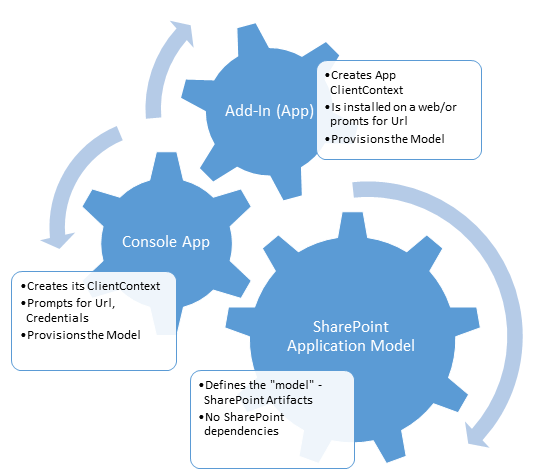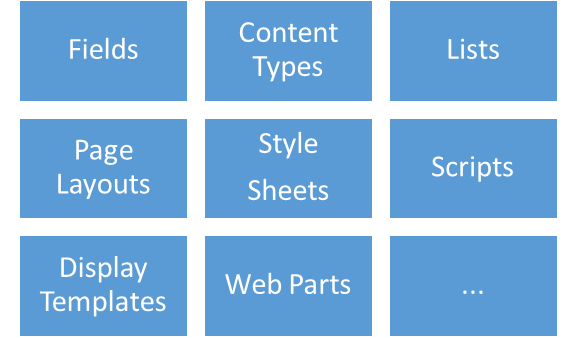Onpremifying SharePoint apps
By Anatoly Mironov
 We want to make an app available in SharePoint OnPrem, we want to onpremify it. Rethink SharePoint apps and provisioning SharePoint artifacts. It has been a while since I updated my blog – Chuvash.eu. I had my vacation, I visited the sunny and green Chuvashia. Now I am back and I am looking forward to an awesome SharePoint Autumn. One of the first things I had to deal with in this SharePoint Autumn was Onpremifying of a SharePoint Online App. We have an app that has gained popularity and we want to make it available for SharePoint OnPrem. There is no such word Onpremify (yet?), I know, it is a Swenglish happy word making (onpremifiera), but I like the word “onpremify” a lot. There is still uncertainty around the purpose of SharePoint apps. One app type, though, has been used a lot in our company: an app that provisions SharePoint Artifacts – that creates SharePoint Applications. What I mean by SharePoint Applications can be read in my blog post:
We want to make an app available in SharePoint OnPrem, we want to onpremify it. Rethink SharePoint apps and provisioning SharePoint artifacts. It has been a while since I updated my blog – Chuvash.eu. I had my vacation, I visited the sunny and green Chuvashia. Now I am back and I am looking forward to an awesome SharePoint Autumn. One of the first things I had to deal with in this SharePoint Autumn was Onpremifying of a SharePoint Online App. We have an app that has gained popularity and we want to make it available for SharePoint OnPrem. There is no such word Onpremify (yet?), I know, it is a Swenglish happy word making (onpremifiera), but I like the word “onpremify” a lot. There is still uncertainty around the purpose of SharePoint apps. One app type, though, has been used a lot in our company: an app that provisions SharePoint Artifacts – that creates SharePoint Applications. What I mean by SharePoint Applications can be read in my blog post:
The successful app type creates SharePoint Applications – by provisioning needed SharePoint artifacts (Fields, Content Types, Lists, Page Layouts, Styles, Scripts, Web Parts, Pages…). Often it is a one time job: When the SharePoint application is provisioined, it is finished.  When you’re about to onpremify such an app, you have three main choices:
When you’re about to onpremify such an app, you have three main choices:
- Install app in OnPrem. Requires the App Infrastructure in place and a separate build of the app (15.0.0.0 version)
- Make a parallel version of the app using a farm solution (not good at all)
- Invoke the provisioning code from a console app (I recommend this one)
The choice 1 might seem obvious, but not all companies have a functioning app infrastructure (a dedicated server for Provider Hosted apps, S2S Trust and Governance around it). The choice 2 splits your app into two variants and makes it hard to maintain. On the other hand, the choice 3 might seem crazy, when you hear it for the first time. A Console App? But give it time, think about it. The idea comes from the awesome SharePoint Provisioning Library SPMeta2, where the Model (SharePoint Artifacts) and Executing are separated. Your model for Fields, Content Types, and Lists and so on, is an agnostic code based definition that can be used for SSOM and CSOM, for SharePoint 2013, SharePoint Online, SharePoint 2016 and SharePoint 2010. SPMeta2 eliminates the need for XML and wsp packages. So my recommended approach for onpremifying SharePoint apps where the main goal is to provision SharePoint Applications is to move the provisioning code into a separate VS Project. The SharePoint App Project (mainly AppManifest.xml) remains the same, The App Web Project is made to a “stupid” interface that invokes the Provisioning Library. We also create a new interface – a Console App. You can replace the console app with a Windows Application, a Web Application, PowerShell Script, An admin page in Central Admin – whatever suits you. The Console app can be used not only in OnPrem, but also in SharePoint Online. SPMeta2 vs. PnP vs. Own Framework Every developer with Self-Respect uses a framework for provisioning SharePoint artifacts. It might be some own utilities or preferably public framework, because you don’t want to repeat yourself, especially in SharePoint. When SPMeta2 and PnP are available it is not smart to reinvent the wheel. I usually recommend to use one of them. I personally prefer SPMeta2 because… mainly because it is more complete and consistent. Read more about SPMeta2 vs. PnP comparison.
Comments from Wordpress.com
What is a SharePoint application - Bool Tech - Oct 1, 2015
[…] is an “App” for SharePoint Online that I converted into a SharePoint Application by adjusting it for SPO and OnPrem. That’s when I came up with the idea of the SharePoint […]